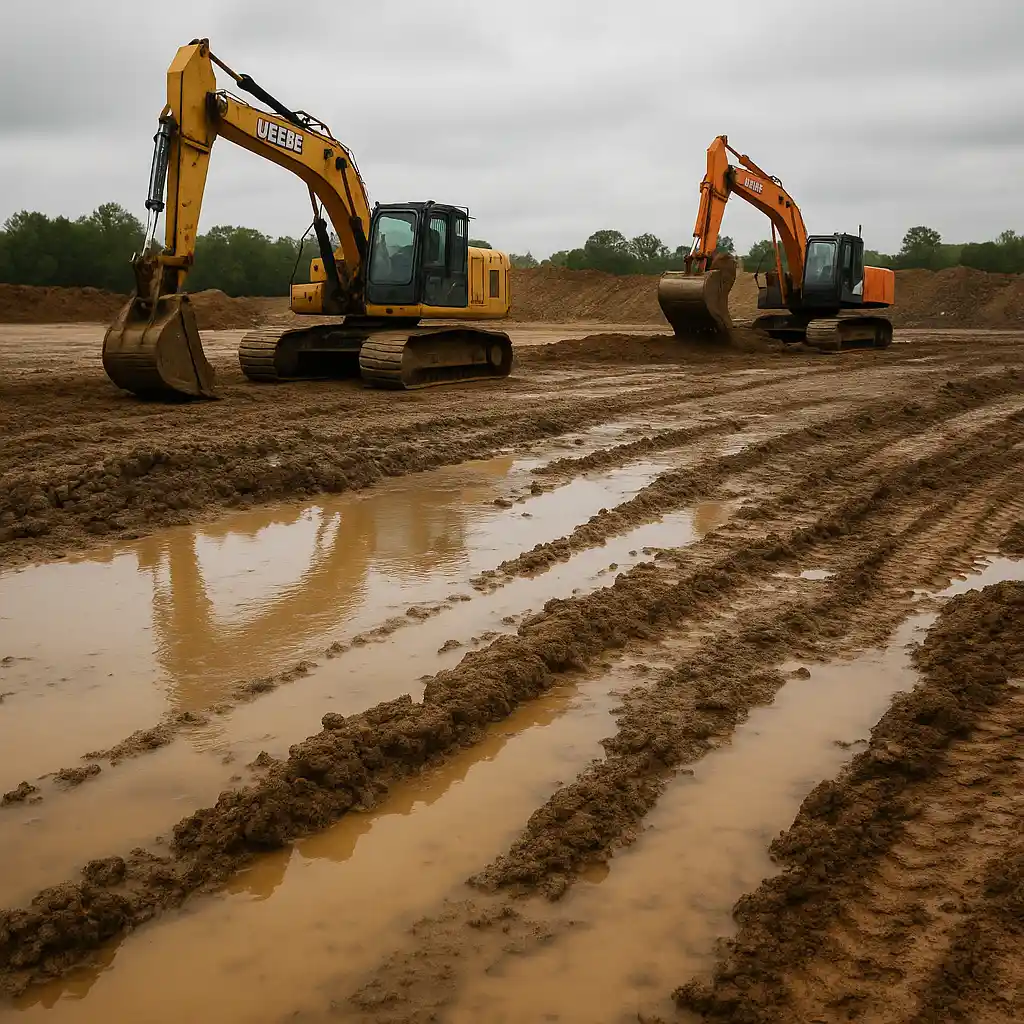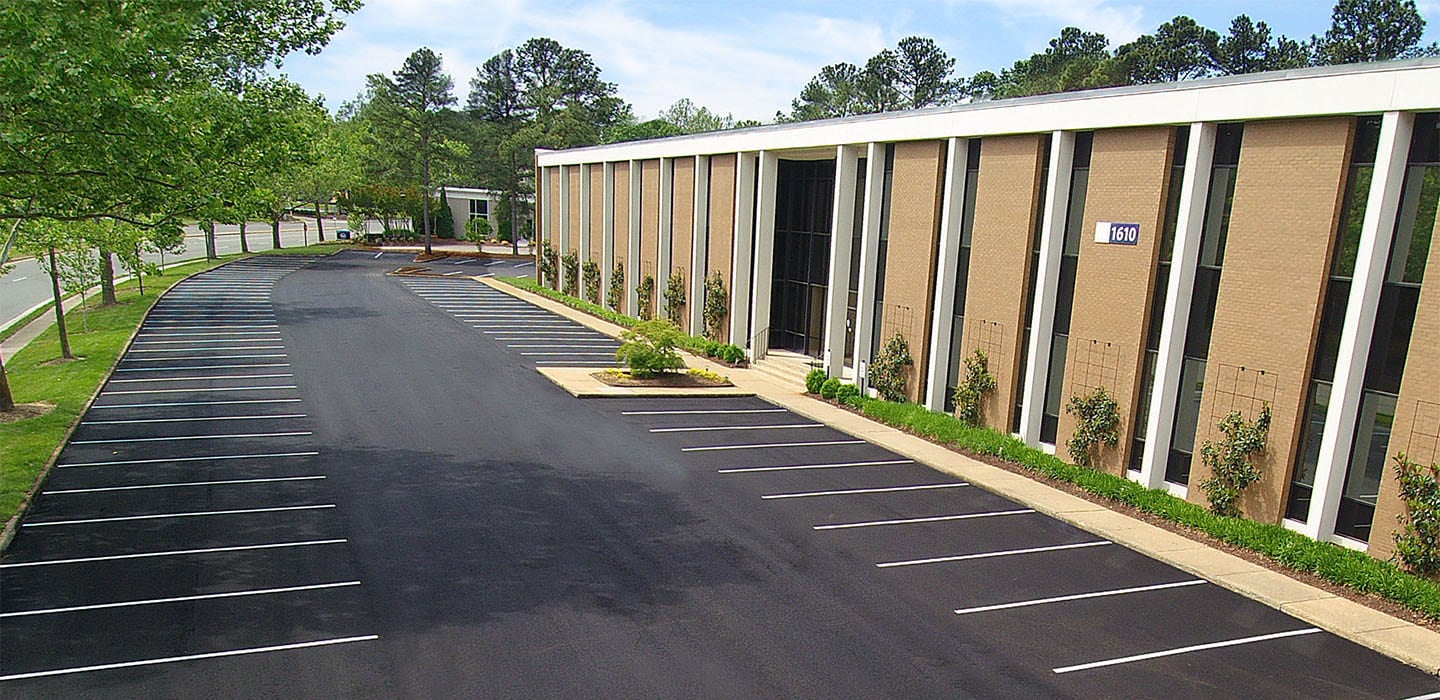
Are you struggling with soggy, unstable job site conditions? You are not alone. Many in the construction industry consider this a common issue. Wet soil is one of the most common and costly job site issues, and a soil drying agent may be the fastest, most reliable fix. Soil drying agents come to the rescue in a wet job site to address excessive moisture in soil, improving its workability, stability, and overall structural integrity.
At Ruston Paving, we are experienced with using drying agents to get the soil in workable condition. In this article, we’ll explain what solid drying agents are, how they work, and when you should use them on your construction site.
What is a Soil Drying Agent?
Soil drying agents are substances used to reduce moisture content in wet or clay-heavy soils. Typically, this agent is a chemical compound like Portland cement, lime, or another calcium-based additive used to reduce moisture content in soil quickly. Drying the soil stabilizes it for safe compaction, a faster build process, and long-term strength.
How Do Soil Drying Agents Work?
Soil drying agents work by absorbing water and/or accelerating the evaporation process, effectively reducing moisture content in the soil. When lime or similar agents come into contact with moisture, they absorb water and generate heat, which accelerates drying. Some additives also modify the soil’s structure by reducing plasticity and improving the capacity of bearing weight. After the application of a soil drying agent, the effects are noticeable within hours.
Common Types of Soil Drying Agents
Portland cement, Quicklime (calcium oxide) and hydrated lime (calcium hydroxide) are commonly used for drying wet clay and silt soils. However, there are several other common types of agents as well.
When Should You Use a Soil Drying Agent?
Wet conditions significantly affect a job site and make it even more dangerous than normal. Read our blog, “The Dangers of Working on a Wet Construction Site.” Use a soil drying agent when any of these situations are present:
- After heavy rainfall or flooding
- When natural drying isn’t fast enough
- Before foundation or slab work
- To avoid delays with moisture-sensitive material (for example, concrete, flooring)
- For stabilization in clay-rich solid or high plasticity index (PI) areas
How Is a Soil Drying Agent Applied?
The steps to apply soil drying agents are as follows:
Note that personal protective equipment (PPE) may be required due to the reactive nature of some agents.
Benefits of Using Soil Drying Agents
Some of the benefits of using soil drying agents on construction sites include:
Risks and/or Considerations with Using Soil Drying Agents
Considerations:
- Over-application can make soil brittle or overly alkaline.
- Requires expert assessment to avoid long-term structural issues.
- Proper curing time must be factored into the scheduling.
- Different applications for different soils should be considered. Some agents work better with clays than silts or sands. In the eastern United States, the soils are well-developed due to extensive weathering processes.
Some of the soils found here include:
Ultisols: This soil order is characterized by its high clay content, acidity, and significant weathering of the parent material.
Red Clay: Ultisols often exhibit a reddish color due to the presence of iron oxides.
Acidity: The soils in this region are typically acidic due to the leaching of alkaline elements and the presence of acidic parent materials.
Well-developed: The soils are considered well-developed due to the long-term weathering and soil-forming processes that have occurred over time.
Summary
To summarize, a soil drying agent is a powerful tool for drying and stabilizing wet ground — when used correctly, it protects your timeline, materials, and bottom line.
Need Help Determining the Right Drying Solution for Your Job Site?
At Ruston Paving, our professional team knows a lot about drying soil for optimum workability and use. We can help you work safely and efficiently on your construction site by using the appropriate soil drying agent. Book a soil assessment with our experts today!

